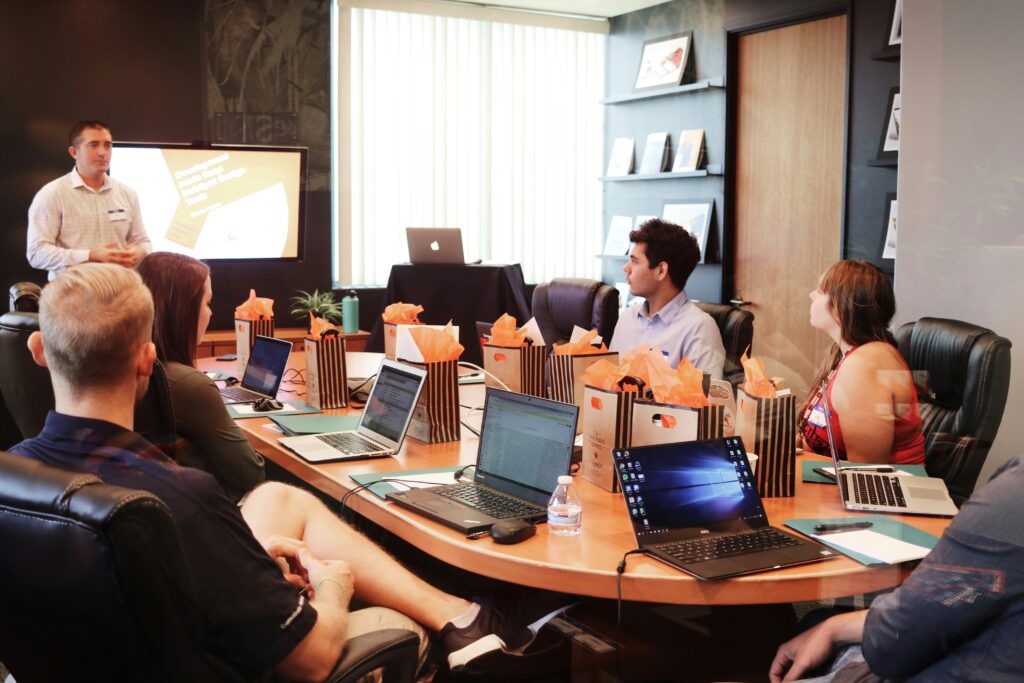
Introduction: A Tipping Point in HR Evolution
Traditional HR: Once the Backbone of Business
Historically, Human Resource departments formed the core of organizational infrastructure. From onboarding and payroll to recruitment and policy enforcement, HR was synonymous with the day-to-day operations that kept businesses running smoothly. The model worked well in an era of localized offices, uniform regulations, and slower market cycles. But today, that world no longer exists.
A New Era of Workforces and Workflows
As the global marketplace grows more complex, so too does the nature of managing talent. The rise of remote workforces, cross-border expansion, decentralized teams, and constantly evolving employment laws has made traditional HR systems feel outdated—often rigid, resource-heavy, and reactionary. Businesses, especially small to mid-sized enterprises and startups, are now seeking leaner, more flexible ways to operate. Enter the Professional Employer Organization (PEO).
The Rise of PEO Services
PEO services have emerged as a modern solution to modern HR problems. These organizations function as co-employers—handling payroll, benefits, tax filings, compliance, and even employee relations—freeing internal teams to focus on strategy, culture, and growth. By pooling employees from multiple client businesses, PEOs gain buying power for benefits and insurance, while ensuring that HR functions are streamlined, standardized, and compliant with regional laws.
This model allows businesses to expand into new markets without the need to establish a legal entity or hire an in-house HR department—making global mobility easier, faster, and far more cost-effective.
Disrupting the Status Quo
The growing reliance on PEOs isn’t just a shift in service—it’s a structural redefinition of HR itself. Traditional departments are increasingly being bypassed in favor of outsourced, technology-driven, compliance-centric models that align with business agility and scalability. Especially in sectors experiencing high growth and rapid change, PEOs offer a plug-and-play HR infrastructure that can be deployed anywhere in the world.
For many, this marks a tipping point. What began as a niche service for startups is now a mainstream strategy adopted by enterprises that prioritize efficiency over bureaucracy. The message is clear: the future of HR may no longer be in-house.

What Are PEO Services?
The Concept of Co-Employment
Professional Employer Organizations, or PEOs, operate under a co-employment model—a legal and operational arrangement in which both the business and the PEO share employment responsibilities. The client company retains full control over daily operations, job roles, and internal culture, while the PEO assumes responsibility for core HR functions. This division of labor creates a seamless experience for employees and relieves the company of many administrative and compliance-related burdens.
Core HR Functions Managed by PEOs
PEO services typically encompass a broad range of essential HR responsibilities, including:
Payroll Administration: Timely and accurate salary disbursements, direct deposits, and wage reporting.
Tax Compliance: Filing local, state, and federal taxes, including end-of-year documentation like W-2s and 1099s.
Employee Benefits: Access to cost-effective health insurance, retirement plans, and other perks typically reserved for larger enterprises.
Workers’ Compensation: Coverage management, claims processing, and assistance with risk prevention strategies.
Regulatory Compliance: Staying up to date with changing labor laws, employee classification, and mandatory reporting requirements.
Risk Mitigation: Providing expert guidance to avoid lawsuits, penalties, or operational risks related to employee mismanagement.
Onboarding and Documentation: Streamlined digital systems to handle new hire paperwork, background checks, and onboarding workflows.
The Value Proposition of Co-Employment
For many businesses—especially startups and SMEs—the PEO model delivers value in several ways. First, it removes the cost and complexity of building a full-scale HR department. Second, it ensures legal compliance across different jurisdictions, reducing exposure to costly violations. And third, it enables access to enterprise-level employee benefits and insurance plans that would otherwise be out of reach.
From Administrative Burden to Strategic Asset
Rather than treating HR as a reactive function, PEOs transform it into a proactive strategy. With the administrative load shifted to a trusted partner, businesses can focus on growth, innovation, and employee engagement. Whether it’s scaling operations globally or managing a hybrid workforce, the flexibility and support provided by PEOs make them an attractive alternative to traditional HR departments.

Why Traditional HR Models Are Breaking Down
In a world of accelerated digital transformation and borderless workforces, the traditional Human Resources model is beginning to falter. While HR departments have historically been critical to organizational success, the modern business environment demands a level of speed, flexibility, and global competency that outdated systems can no longer support. Let’s explore the core reasons why traditional HR is losing its edge.
1. Lack of Agility
Today’s business climate thrives on agility—remote teams, gig economy workers, hybrid models, and tech-driven processes are the new normal. Yet, many in-house HR departments are structured around slow, hierarchical processes that struggle to adapt. Rolling out a remote hiring policy or integrating new HR software across global teams can take months in a traditional setup. In contrast, PEOs offer plug-and-play solutions that enable businesses to expand and adapt in real-time, making the conventional HR approach look sluggish and inefficient.
2. Compliance Complexity
Employment regulations have become increasingly complex and vary wildly across countries, states, and even local jurisdictions. From tax obligations and labor laws to employee classification and benefits entitlements, the rules are constantly shifting. For companies operating internationally, compliance is not just challenging—it’s a legal minefield. Traditional HR departments often lack the bandwidth and regional expertise to stay on top of these evolving regulations, opening businesses up to fines, audits, and lawsuits. PEOs, on the other hand, specialize in navigating these complexities, ensuring businesses remain compliant wherever they operate.
3. Operational Cost
Building and maintaining a full-fledged HR department is expensive. Salaries for recruiters, payroll processors, compliance officers, and benefits managers quickly add up. Add to that the cost of training, HR software, legal consultants, and employee management tools, and the overhead can be overwhelming—especially for startups and mid-sized companies. PEOs eliminate this burden by offering a shared-services model, distributing the costs across multiple clients and delivering high-quality HR support at a fraction of the price.
4. Rising Employee Expectations
Today’s workforce is digitally savvy, mobile, and experience-focused. Employees expect seamless onboarding, real-time access to pay stubs, flexible work policies, and a suite of benefits tailored to their needs—often including mental health support, wellness stipends, and remote work allowances. Traditional HR systems, often reliant on outdated software and manual processes, struggle to meet these evolving demands. PEOs, with their modern platforms and scalable benefits packages, are better equipped to deliver the employee experience that today’s talent expects and deserves.
A Model Under Pressure
The combined weight of these factors—rigid systems, mounting compliance obligations, high costs, and rising employee demands—is creating a tipping point. Traditional HR departments are increasingly viewed as bottlenecks rather than enablers of growth. As a result, businesses are looking toward PEOs to offload the administrative burden and refocus internal efforts on strategic initiatives.

How PEOs Solve Modern Workforce Challenges
As traditional HR models continue to face mounting challenges, Professional Employer Organizations (PEOs) have emerged as a transformative solution. By bridging the gap between compliance, scalability, cost efficiency, and modern employee expectations, PEOs offer an agile and comprehensive alternative. Here’s how PEOs address the most pressing workforce challenges businesses face today.
1. Compliance and Legal Expertise
Navigating labor laws, tax regulations, and employment standards across multiple jurisdictions is a complex and ongoing challenge. Each country—and often each region—has its own set of evolving rules that require specialized knowledge. PEOs are built around this complexity. They maintain legal and compliance teams that track changes in employment law, reducing the risk of non-compliance, penalties, and litigation for client businesses. This ensures peace of mind for companies that lack the resources to hire in-house legal counsel or compliance officers.
2. Global Talent Access
In a remote-first world, businesses no longer want to be limited by geography when hiring talent. However, hiring employees in another country typically requires setting up a local legal entity—a time-consuming and expensive process. PEOs eliminate this barrier. As co-employers with established legal entities worldwide, they enable companies to onboard international employees quickly and legally without the need for complex infrastructure. This allows businesses to tap into global talent pools while maintaining full compliance with local labor laws.
3. Cost Efficiency
Hiring an internal HR team with specialists in payroll, benefits, compliance, and employee relations is expensive—especially for small and medium-sized enterprises (SMEs). PEOs offer a cost-effective solution by spreading operational expenses across multiple clients. Through this shared-services model, businesses gain access to enterprise-level HR capabilities and benefit programs at a significantly lower cost. Moreover, reduced liability and improved efficiency translate into long-term financial savings.
4. Integrated Technology
Many traditional HR departments still rely on outdated software and manual processes. In contrast, modern PEOs invest heavily in digital infrastructure. They offer intuitive, tech-enabled platforms that handle payroll processing, benefits administration, onboarding, compliance tracking, and data analytics—all in one place. This not only improves accuracy and efficiency but also enhances transparency and employee engagement. Business leaders can access real-time HR data and reports to inform strategic decisions, something legacy systems often fail to deliver.
5. Scalability
Whether it’s entering new markets or doubling the workforce in a matter of months, scaling presents major operational and compliance hurdles. PEOs are designed for scale. They provide a flexible framework that allows companies to grow without the drag of bureaucratic bottlenecks or regulatory risks. From rapid onboarding to localized compliance management, PEOs streamline the growth journey, allowing businesses to focus on expansion rather than administration.

Key Advantages Over Traditional HR Services
As companies evolve to meet the demands of a decentralized and fast-paced work environment, the shortcomings of traditional HR services become increasingly evident. In contrast, PEO services offer advanced capabilities that outperform legacy systems in nearly every category. Here’s a breakdown of where PEOs excel:
Payroll: Accuracy and Automation
Traditional HR departments often rely on fragmented or manual payroll systems, increasing the risk of errors, delays, and compliance issues. Processing payroll in-house requires multiple tools, manual calculations, and constant updates on tax changes.
PEO Services provide centralized and automated payroll processing. From direct deposits to real-time tax calculations, everything is streamlined through a cloud-based dashboard—ensuring timely, accurate, and fully compliant payments across multiple jurisdictions.
Compliance: Built-In Legal Assurance
Traditional HR teams must hire in-house legal or compliance experts or outsource costly legal advice to navigate employment laws. With ever-changing regional regulations, staying compliant is a full-time challenge.
PEO Services specialize in compliance. They monitor legal changes in real-time and adapt practices accordingly—covering everything from employee classification to tax withholding and labor law adherence. Businesses benefit from global legal coverage without the overhead.
Employee Benefits: Scale and Affordability
Traditional HR often offers limited benefit plans due to budget constraints, especially in small and mid-sized businesses. Premiums are high, and the options are basic.
PEO Services aggregate employees from multiple businesses, giving them buying power typically reserved for large corporations. As a result, they offer comprehensive, enterprise-grade benefit packages—healthcare, retirement, wellness programs—at lower rates.
International Hiring: Simplified Expansion
Traditional HR struggles with cross-border hiring, requiring the setup of legal entities, navigating local tax systems, and managing foreign payrolls.
PEO Services make international hiring frictionless. With established entities in multiple countries, they enable businesses to onboard global talent without needing to register locally—cutting down on both time and cost.
Technology: Modern, Scalable Platforms
Traditional HR often runs on outdated, disconnected systems, making data retrieval, analytics, and integration difficult.
PEO Services utilize modern, cloud-based platforms that consolidate all HR functions—payroll, benefits, compliance, reporting—into a single, user-friendly interface. This enhances efficiency, visibility, and decision-making.

Industries Rapidly Adopting PEO Models
As the global workforce becomes more decentralized and compliance demands intensify, businesses across a wide range of sectors are turning to Professional Employer Organizations (PEOs) to streamline HR operations. Industries that prioritize scalability, workforce flexibility, and regulatory adherence are leading the charge in PEO adoption.
1. Tech Startups
Tech startups thrive on speed and flexibility. These companies often build remote-first teams, hire across time zones, and expand into international markets early in their lifecycle. Traditional HR structures simply can’t keep pace. PEOs offer tech startups a way to scale globally, manage multi-country payrolls, and provide competitive benefits—without needing to establish local entities or in-house HR departments.
2. Manufacturing and Logistics
Manufacturers and logistics companies often operate across state or national lines, employing a mix of full-time, part-time, and contract workers. Managing HR for such a diverse and dispersed workforce is a major challenge. PEOs simplify this complexity by offering region-specific compliance support, streamlined payroll for hourly workers, and risk mitigation for workplace safety—crucial in physically intensive industries.
3. Healthcare
The healthcare sector is one of the most heavily regulated, with high turnover rates and unique staffing requirements. From maintaining credentials and certifications to handling complex benefits and legal liabilities, HR in healthcare is multifaceted. PEOs help healthcare providers maintain compliance, manage employee benefits, and ensure continuity in staffing—all while easing the administrative burden on internal teams.
4. E-commerce and Retail
Businesses in e-commerce and retail face seasonal surges, multiple employment types, and dispersed locations—all of which require fast, scalable HR support. PEOs enable these companies to efficiently handle seasonal hiring, offer consistent benefits across outlets, and remain compliant with varied labor laws in different regions. This is especially valuable during high-demand periods like holidays or promotional events.
5. Consulting and Creative Services
Agencies, consultants, and creative firms frequently collaborate with freelancers, gig workers, and international contractors. Managing contracts, taxes, and payment structures across borders can be a legal headache. PEOs act as a compliance partner, offering standardized onboarding, streamlined payroll, and access to flexible benefits—even for non-traditional employment models.

Case Studies: From Traditional to PEO-Driven HR
The real-world impact of shifting from traditional HR models to PEO-driven solutions is both measurable and transformative. Below are three distinct case studies showcasing how companies across different sectors overcame operational roadblocks and achieved scalable success through PEO partnerships.
Case 1: A SaaS Startup Expanding to APAC
A rapidly growing SaaS company headquartered in the U.S. was eager to tap into tech talent in Asia-Pacific markets, specifically India, Singapore, and the Philippines. Setting up legal entities in each country would have taken months—delaying product timelines and increasing costs.
The PEO Solution:
The startup partnered with a global PEO that already had established legal presence in each target country. Within just two weeks, the company was able to onboard skilled developers and product managers in all three locations—compliant with local tax laws, labor regulations, and employment standards.
Impact:
The business avoided complex legal setup, accelerated hiring timelines, and ensured local compliance with zero internal legal hires.
Case 2: Healthcare Firm Struggling with Compliance
A mid-sized hospital group in the UK was overwhelmed by compliance requirements, particularly around staff credentials, benefits administration, and labor audits. Their internal HR team was stretched thin, leading to burnout and multiple warning notices from regulators.
The PEO Solution:
By outsourcing HR functions to a PEO with healthcare-specific expertise, the firm centralized employee data management, automated compliance tracking, and improved benefits coordination.
Impact:
Regulatory compliance rates soared, audit preparation time was cut in half, and the internal HR team was able to redirect efforts toward employee engagement and patient-centered initiatives.
Case 3: E-commerce Brand Scaling Globally
A lifestyle e-commerce brand saw a surge in international demand and decided to scale into the Middle East and Europe. Managing payroll, local labor laws, and employment contracts for over 100 remote workers posed a massive administrative challenge.
The PEO Solution:
The company implemented a PEO solution offering a unified dashboard for payroll, compliance, and benefits management across multiple countries.
Impact:
With a single platform managing HR for over 100 employees in five countries, the brand saved hundreds of man-hours monthly and scaled operations without expanding its in-house HR team.

The Role of Technology in the PEO Revolution
In today’s fast-moving, digital-first business environment, the evolution of Professional Employer Organizations (PEOs) is being driven not just by service offerings—but by cutting-edge technology. Modern PEOs are far more than administrative support—they are technology-powered HR platforms that integrate automation, data intelligence, and user-centric design to transform the employee experience and streamline operations for businesses.
Automated Payroll Processing
Gone are the days of spreadsheets and manual calculations. PEO platforms now offer fully automated payroll systems that manage everything from salary disbursement to tax withholdings and statutory deductions—accurately and on time, across multiple geographies. This ensures compliance and frees internal resources for strategic HR initiatives.
Smart Compliance Alerts
Regulatory environments are dynamic, especially for businesses operating across borders. PEO platforms use AI-driven compliance engines that automatically track legislative changes and alert businesses to necessary actions. These smart systems reduce the risk of violations, penalties, and missed deadlines, helping businesses stay compliant without constant legal oversight.
Seamless Onboarding Workflows
PEO technology enables digital onboarding for employees, offering pre-configured workflows that cover document verification, digital signatures, tax forms, and welcome kits. This significantly accelerates hiring timelines and ensures consistent onboarding experiences across regions.
Employee Self-Service Portals
Modern workers expect autonomy and transparency. PEO-powered employee portals give team members access to their payslips, benefits information, leave balances, and tax documents—all in one place. This self-service approach boosts engagement and reduces the administrative burden on HR teams.
Benefits Management Dashboards
From health insurance to retirement contributions, PEOs consolidate and manage employee benefits through intuitive dashboards. These platforms allow employees to compare plans, make changes during open enrollment, and track their coverage—creating a more personalized and responsive benefits experience.
Workforce Analytics and Insights
Perhaps one of the most transformative tools offered by tech-forward PEOs is real-time workforce analytics. Businesses gain access to dashboards that visualize turnover rates, hiring costs, benefits usage, and more. This empowers data-driven decision-making in areas like hiring strategy, retention planning, and compensation design.
The Rise of AI and Predictive Intelligence
AI and machine learning are reshaping PEO capabilities. From predicting compliance risks to suggesting customized benefits packages, these technologies enable smarter, faster, and more strategic HR management—making PEOs the digital leaders of the modern workforce revolution.

Challenges in Adopting PEO Services
While PEOs offer a compelling alternative to traditional HR models, transitioning to this structure is not without its challenges. Businesses must prepare for both operational and cultural adjustments to make the most of a PEO partnership.
1. Cultural Shift
Many organizations are accustomed to having direct, in-house control over HR operations. The idea of outsourcing core employee functions—like payroll, compliance, and benefits—can face internal resistance. Leadership and staff may question the reliability of an external partner and feel apprehensive about losing oversight. Overcoming this requires change management and clear communication about the strategic value of the shift.
2. Vendor Dependency
The success of a PEO model largely depends on choosing the right provider. A mismatch between the PEO and the company’s goals, industry, or values can lead to inconsistent service or even compliance risks. Organizations must conduct thorough due diligence when evaluating PEO partners—looking at expertise, platform capabilities, client references, and contract terms.
3. Data Security
Outsourcing HR functions means transferring sensitive employee information—such as salaries, identification details, and medical records—to a third party. This raises legitimate concerns about data privacy and cybersecurity. Businesses must ensure that their chosen PEO employs robust security protocols, encryption standards, and compliance with data protection regulations like GDPR and HIPAA.
4. Legal Understanding
The concept of co-employment can be unfamiliar and misunderstood, especially for businesses new to the model. It’s crucial to educate internal stakeholders about the legal framework, roles, and responsibilities involved to avoid confusion or miscommunication down the line.
Proactive planning, vendor vetting, and ongoing collaboration are essential for a successful transition to a PEO-driven model. With the right foundation, these initial challenges can be effectively mitigated.

Future Outlook: Is Traditional HR Really Over?
Traditional HR Isn’t Obsolete—It’s Evolving
Despite the rise of PEO services, traditional HR departments are not vanishing altogether. Instead, they’re undergoing a transformation. Large enterprises and heavily regulated organizations may still prefer maintaining internal HR teams for strategic control and cultural alignment. However, the scope of HR’s responsibilities is shifting. No longer burdened by administrative tasks, internal HR teams are being redefined as architects of organizational culture and drivers of long-term talent strategy.
PEOs Absorb the Operational Load
The core advantage of PEOs lies in their ability to handle the compliance-heavy and administrative components of HR—like payroll, tax filings, benefits administration, and regulatory updates. These are areas where speed, precision, and cross-border expertise are crucial. By offloading these responsibilities to PEOs, companies can reduce overhead, increase agility, and mitigate legal risk—all while ensuring operational excellence.
A New Hybrid Model
The future of HR will likely take shape as a hybrid model—where internal HR teams focus on leadership development, engagement, DEI (Diversity, Equity, Inclusion), and talent retention, while PEOs manage the back-end infrastructure. This partnership creates a leaner and more strategic HR function, enabling businesses to respond faster to workforce needs without sacrificing compliance or employee satisfaction.
Redefining HR’s Purpose
What this signals is not the death of HR, but rather a redefinition of its purpose. Administrative execution is no longer its primary function. Instead, modern HR teams—supported by PEOs—will emerge as strategic partners focused on shaping workforce culture, improving employee experience, and driving organizational growth.

Conclusion: Embracing the PEO-Driven Future
A New Era in Workforce Management
The rise of Professional Employer Organizations (PEOs) signals a seismic shift in how businesses approach HR. No longer do organizations need to bear the full weight of in-house departments, legal compliance, and payroll complexity. With PEOs, companies can access a plug-and-play HR solution that’s scalable, tech-driven, and globally compliant—eliminating many of the traditional pain points of managing people.
This is especially valuable in a post-pandemic world where remote work, global hiring, and flexible employment models are becoming the norm rather than the exception.
Reimagining the Role of HR
The evolution of HR is not about elimination—it’s about elevation. Traditional HR roles are transforming from administrative execution to strategic enablement. Instead of processing paperwork or managing compliance checklists, modern HR professionals are being freed up to focus on what matters most: building culture, nurturing leadership, and improving the employee experience.
PEOs make this shift possible by absorbing the operational load and offering centralized platforms that unify payroll, benefits, and compliance across borders.
The Competitive Edge for Growth-Focused Companies
For businesses looking to scale globally, manage distributed teams, or reduce overhead while maintaining compliance, the competitive edge offered by PEOs is undeniable. These services provide faster market entry, lower HR costs, and reduced legal exposure—allowing even small and mid-sized companies to compete on a global stage.
Final Thoughts: The Time Is Now
The HR landscape is at a tipping point. Companies that continue relying solely on traditional in-house HR models may find themselves outpaced by more agile competitors leveraging PEO partnerships.
PEO services are not a distant future—they are today’s answer to tomorrow’s workforce demands. Businesses that embrace this model now will not only future-proof their HR strategy but also position themselves for long-term growth, resilience, and global success.
